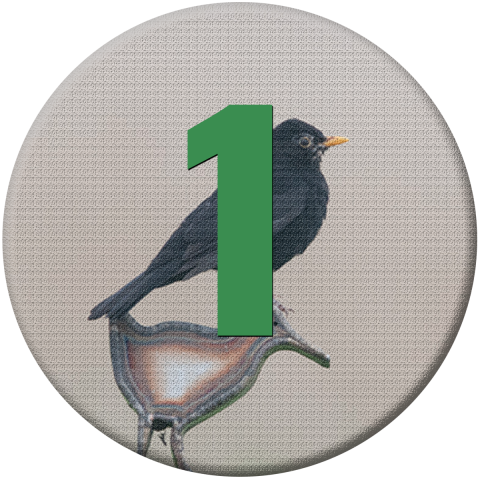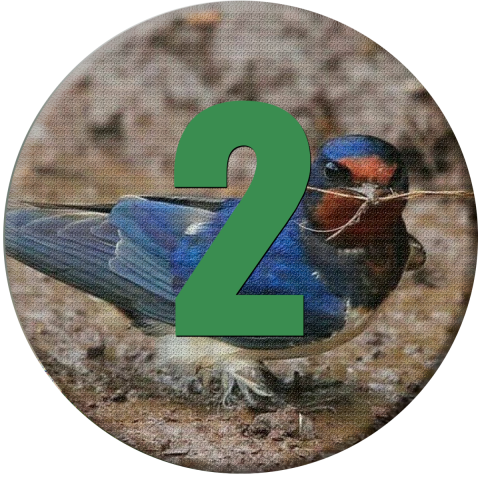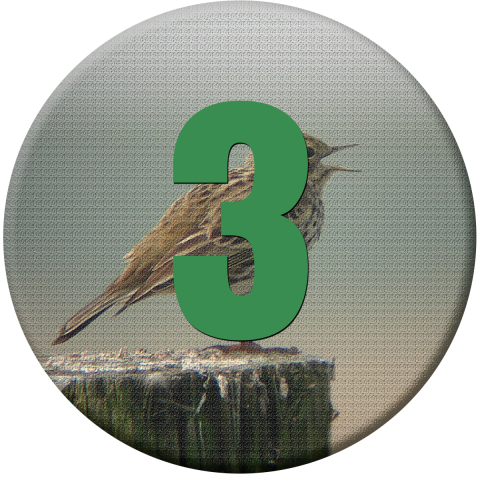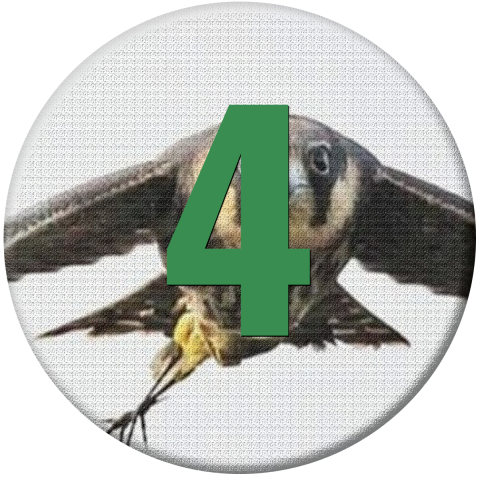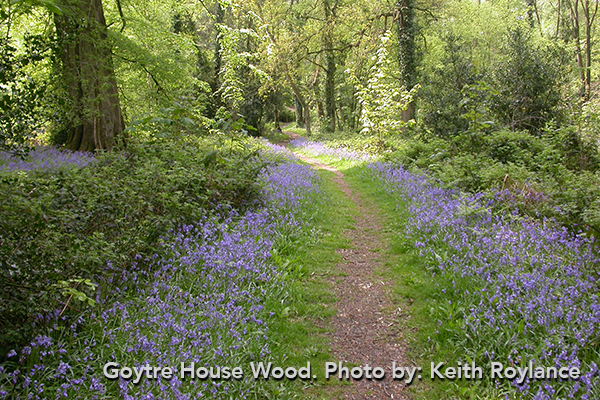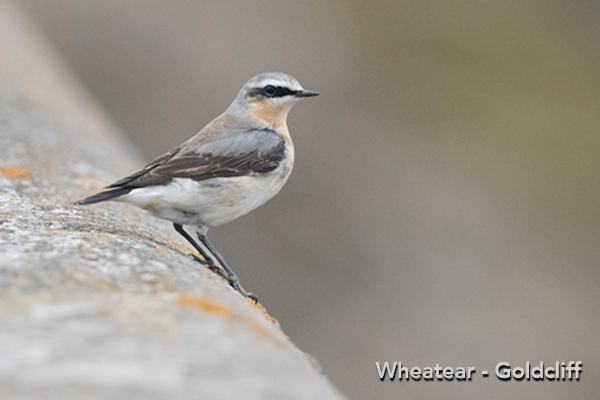The Birdwatchers’ Code
The birdwatchers’ code puts the interests of birds first and respects other people, whether or not they are interested in birds. It applies whenever you are watching birds in the UK or abroad.
Please help everybody to enjoy birdwatching by following the code, leading by example and sensitively challenging the minority of birdwatchers who behave inappropriately.
Five things to remember...
1 - The Birds Come First
Birds respond to people in many ways, depending on the species, location and time of year.
If birds are disturbed they may keep away from their nests, leaving chicks hungry or enabling predators to take their eggs or young. During cold weather, or when migrants have just made a long flight, repeatedly disturbing birds can mean they use up vital energy that they need for feeding.
It is illegal to intentionally or recklessly disturb some species while they are breeding, while Golden Eagle, White-tailed Eagle, Hen Harrier and Red Kite are protected from harassment at all times.
Whether you are particularly interested in photography, bird ringing, sound-recording or birdwatching, remember to always put the interests of the birds first.
- Avoid going too close to birds or disturbing their habitats – if a bird flies away or makes repeated alarm calls, you’re too close. If it leaves, you won’t get a good view of it anyway.
- Stay on roads and paths where they exist and avoid disturbing habitat used by birds.
- Think about your fieldcraft. You might disturb a bird even if you are not very close, e.g. a flock of wading birds on the foreshore can be disturbed from a mile away if you stand on the seawall.
The use of birdsong apps
The development of phone apps that provide recordings of birdsong are a very useful way of helping birders to get to grips with this tricky identification feature. However, on no account should these be used to entice birds out of cover during the breeding season as this can disrupt nesting behaviour at a time of year when birds need to focus all their efforts on breeding; it also potentially makes birds and nests more vulnerable to predation. It is strongly recommended that if these apps are used in the field (to identify or learn a call, not to lure a bird) the user wears earphones.
2 - Be an Ambassador
Think about your fieldcraft and behaviour, not just so that you can enjoy your birdwatching, but so others can too.
Respond positively to questions from interested passers-by. They may not be birdwatchers yet, but a good view of a bird or a helpful answer may ignite a spark of interest. Your enthusiasm could start a lifetime’s interest in birds and a greater appreciation of wildlife and its conservation.
Consider using local services, such as pubs, restaurants, petrol stations, and public transport. Raising awareness of the benefits to local communities of trade from visiting birdwatchers may, ultimately, help the birds themselves.
3 - Know the Rules
The Countryside Code
Respect the wishes of local residents and landowners and don’t enter private land without permission, unless it is open for public access on foot.
Follow the codes on access and the countryside for the place you’re walking in.
Irresponsible behaviour may cause a land manager to deny access to others (eg for important bird survey work). It may also disturb the bird or give birdwatching bad coverage in the media.
Legislation provides access for walkers to open country in Britain and includes measures to protect wildlife. Note that the rules and codes are different in each part of Britain so plan ahead and make sure you know what you can do.
In Scotland access is available to open country and to field margins of enclosed land to reach open country, provided you act in accordance with the Scottish Outdoor Access code.
In England and Wales access is to land mapped as mountain, moor, heath and down and to registered common land. However, local restrictions may be in force so follow the Countryside Code and plan your visit. In England the Countryside Code and maps showing areas for public access are on the Countryside Access website; in Wales they are on the Natural Resources Wales and the Countryside Code websites. Although there is no statutory right of access in Northern Ireland there is lots of information, including the Country Code, at the Countryside Access and Activities Network website.
The Law
Laws protecting birds and their habitats are the result of hard campaigning by generations of birdwatchers. We must make sure that we don’t allow them to fall into disrepute.
It is a criminal offence to intentionally or recklessly disturb, at or near the nest, any species listed on Schedule 1 of the Wildlife & Countryside Act 1981. In Scotland disturbing leks of Capercaillie or Ruff is also an offence. Disturbance can include playback of songs and calls. Should a successful prosecution occur the courts can impose fines of up to £5,000 and/or a prison sentence of up to six months for each offence.
Scottish Natural Heritage can, for particular reasons such as scientific study, issue licences to individuals that permit limited disturbance, including monitoring of nests and ringing.
It is a criminal offence to destroy or damage, intentionally or recklessly, a special interest feature of a Site of Special Scientific Interest (SSSI) or to disturb the wildlife for which the site was notified. In Scotland the maximum fine on summary conviction is £40,000 or an unlimited fine on conviction or indictment. In England, Wales and Northern Ireland a fine of up to £20,000 may be imposed by a Magistrates’ Court or an unlimited fine by a Crown Court.
If you witness anyone who you suspect may be illegally disturbing or destroying wildlife or habitat, phone the police immediately (ideally, with a six-figure map reference) and report it to the RSPB.
4 - Make Your Sightings Count
Add to tomorrow’s knowledge of birds by sending your sightings to BirdTrack. This online recording scheme from the BTO, SOC, the RSPB and BirdWatch Ireland allows you to input and store all of your birdwatching records, which in turn helps to support species and site conservation. With one click you can also have your records forwarded automatically to the relevant county recorder.
County recorders and local bird clubs are the mainstay of bird recording in the UK. Your records are important for local conservation and help to build the county’s ornithological history. For a list of county bird recorders visit the British Birds website or ask at your local library.
You can also get involved in a UK-wide bird monitoring scheme such as the Breeding Bird Survey and the Wetland Bird Survey.
If you’ve been birdwatching abroad, you can give your sightings to the BirdLife International Partner in that country by visiting the World Birds website. Your data could be vital in helping to protect sites and species in the country you’ve visited.
5 - Rare Birds
Mobile phones, telephone and pager services and the internet mean you can now share your sightings instantly.
If you discover a rare bird please bear the following in mind:
- Consider the potential impact of spreading the news and make an effort to inform the landowner (or, on a nature reserve, the warden) first. Think about whether the site can cope with a large number of visitors and whether sensitive species might be at risk such as breeding terns, flocks of wading birds or rare plants. The county bird recorder or another experienced birdwatcher can often give good advice.
- On private land always talk to the landowner first. With a little planning access can often be arranged.
- People coming to see a rare bird can raise money for a local reserve, other wildlife project or charity. Consider organising a voluntary collection at access points to the site.
- Rare breeding birds are at risk from egg-collectors and some birds of prey from persecution. If you discover a rare breeding species that you think is vulnerable contact the RSPB; it has considerable experience in protecting rare breeding birds. Please also report your sighting to the county bird recorder. Also, consider telling the landowner – in most cases, this will ensure that the nest is not disturbed accidentally.
If you have the opportunity to see a rare bird, enjoy it, but don’t let your enthusiasm override common sense. In addition to the guidelines above:
- Park sensibly, follow instructions and consider making a donation if requested.
- Don’t get too close so that you can take a photograph – you’ll incur the wrath of everyone else watching if you scare the bird away.
- Be patient if the viewing is limited, talk quietly and give others a chance to see the bird too.
- Do not enter private areas without permission.
- Not everyone likes to see an ‘organised flush’ and it should never be done in important wildlife habitats or where there are other nesting or roosting birds nearby. A flush should not be organised more frequently than every two hours and not within two hours of sunrise or sunset so that the bird has a chance to feed and rest.
About the Code
The birdwatchers’ code was produced by a partnership of:
- The Association of County Recorders and Editors
- The British Ornithologists’ Union
- British Trust for Ornithology
- The RSPB
- SOC
- Wildfowl & Wetlands Trust
Next event
Latest news
- Indoor Meeting – Pole Position Marek Borkowski Wed 20th Nov 2024
- Indoor Talk – Birds of Costa Rica Saturday 19th October 2024 Sun 13th Oct 2024
- Swift Brick Petition Tue 17th Sep 2024
- Updated – 2020 Bird Report is now available. Sun 25th Aug 2024


